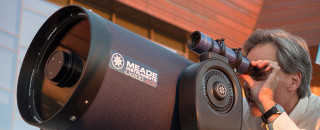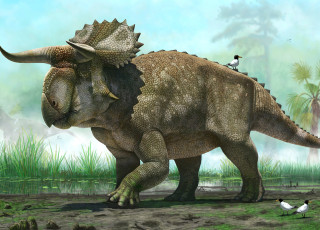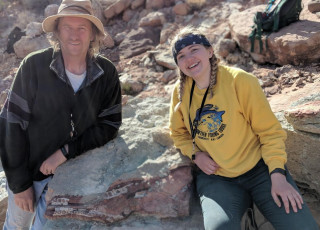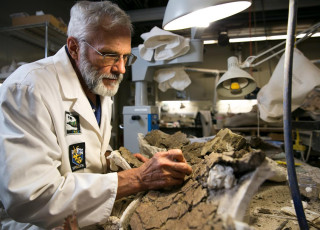Michael Martin: Architect, NHMU Facilities Manager, Night Sky Junkie
Adapted from a profile written by Donna Gelfand. All photos by BJ Nicholls.
Wearing many hats is kind-of a thing at NHMU. Our botanists lead hikes, our paleontologists manage volunteers, and our exhibit designers are skilled photographers. Our facility manager, Michael Martin, is no exception.
Mike makes sure our 160,000 sq-ft facility stays beautiful and functional. In the past, he’s been a stellar NHMU volunteer, helping to photograph and catalog anthropological artifacts housed at the Anasazi State Museum in Boulder, Utah. Being a licensed architect, he can also design you a new office space or government building, complete with drawings. And to top it off, he’s amassed an enthusiast's stockpile of knowledge about telescopes and the night sky.

“I don’t know what it is, when we’re kids, that gives us these innate interests, but I’ve just been around long enough to be able to explore all of the things I’m interested in,” he says.
Every Wednesday night until 9 p.m. when viewing conditions are favorable (clear and dark), Michael sets up a couple of his telescopes at the Museum’s front door and invites passing visitors to look through them. He is a tall man, casually dressed, with a piercing but friendly gaze. “Do you want to see the moon?” he asks, and almost everyone accepts. His favorite telescope for distant faint objects is a 12-inch Schmidt-Cassegrain (SC)-type telescope weighing 125 lbs. This one has a built-in GPS and can follow moving objects for hours as they transit the sky. He also uses a smaller, 8-inch SC telescope that is 30-years old and still beloved. “It’s so simple,” he insists, explaining the workings of the equatorial mount like they’re a child’s wooden blocks.
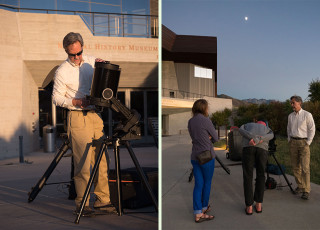
Michael’s natural curiosity is infectious, and leads to many teaching moments. “If we measured the diameter of the moon starting in New York, how far across the U.S. would it go?” he asks visitors who are lining up at his telescopes. It turns out the answer is Salt Lake City. This tangible visualization of space trivia belies the depth of his knowledge and commitment to sharing it. He banters easily with visitors: craters in the moon can be 60 miles across, crater walls can reach 15,000 feet high, and no, we can’t see the American flag planted on the moon though our telescopes. Heck, he even carries a heavy iron meteorite fragment from Russia in his pocket just in case it might come in handy.
Michael is a great example of how NHMU is the place where people can explore the things they’re passionate about. It’s not just welcomed here, it’s pretty much expected. On the next clear and dark Wednesday evening in Salt Lake City, you might want to find your way up to NHMU and hang out with Michael for a little while. We guarantee you’ll learn something interesting.
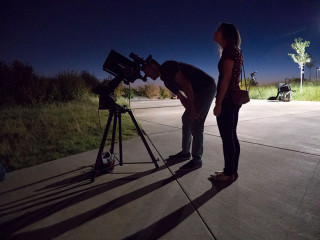
Note: Michael’s favorite season for night sky viewing at NHMU is winter, but fall and spring are also good because it gets dark earlier. Summer can be difficult because it stays light until we close at 9 p.m., but he’ll generally be out there around the first quarter moon no matter what the season.
Donna Gelfand is a retired professor of psychology from the U of U and a long-time NHMU volunteer. BJ Nicholls is a marketing professional, long-time volunteer, and member of the NHMU Volunteer Board. The Natural History Museum of Utah is a part of the University of Utah in Salt Lake City. Our mission is to illuminate the natural world and the place of humans within it. In addition to housing outstanding exhibits for the public, NHMU is a research museum. Learn more.
